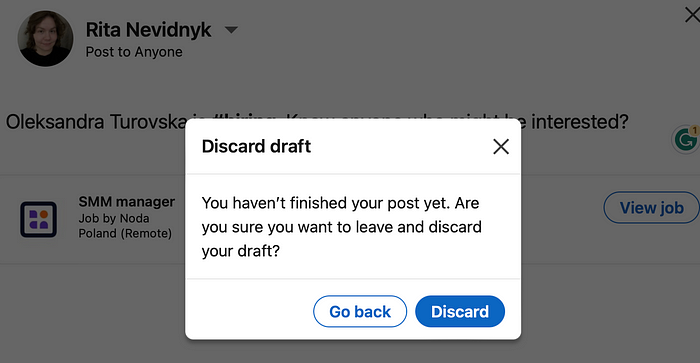Member-only story
LinkedIn is an example of a bad product we just got used to
Hell is empty — all my colleagues are here.

LinkedIn is a type of social media. Social media obeys usability heuristics, like everything else on the web. For example:
- Users often perform actions by mistake. They need a marked “emergency exit” to leave the unwanted action without having to go through an extended process.
and, to add to it:
- Users should not have to wonder whether different words, situations, or actions mean the same thing.
However, LinkedIn, once you try making sense of it, breaks both of these rules. Look at this:

Here’s my journey: I’ve decided to repost a position from my ex-employer (because Noda is a nice company) but changed my mind.
1. How many times do you need to “you” me? Apparently, five times in two sentences. “You (1) haven’t finished your (2) post yet. Are you (3) sure you (4) want to leave and discard your (5) draft?”
2. “Go back” and “Discard” — seem to perform the same action to me. “Go back” is associated with cancelling an action and going back to the Home page. Discard=discard draft. So what’s the difference? I’m losing it.
3. Other languages average 1.5 times longer than English, so text that’s short may be long when translated. So, three lines of text? I’m scared to see how it looks in German.
How Google would write a similar screen:

A good thing about the Google example, besides:
- being concise
- not overly crazy about you (Google recommends using the second-person pronouns “you” and “your” to help the user feel like the UI is talking to them and referring to their actions)
- simplifies English: “Leave” or “Cancel” instead of “Discard” and “Go Back”





